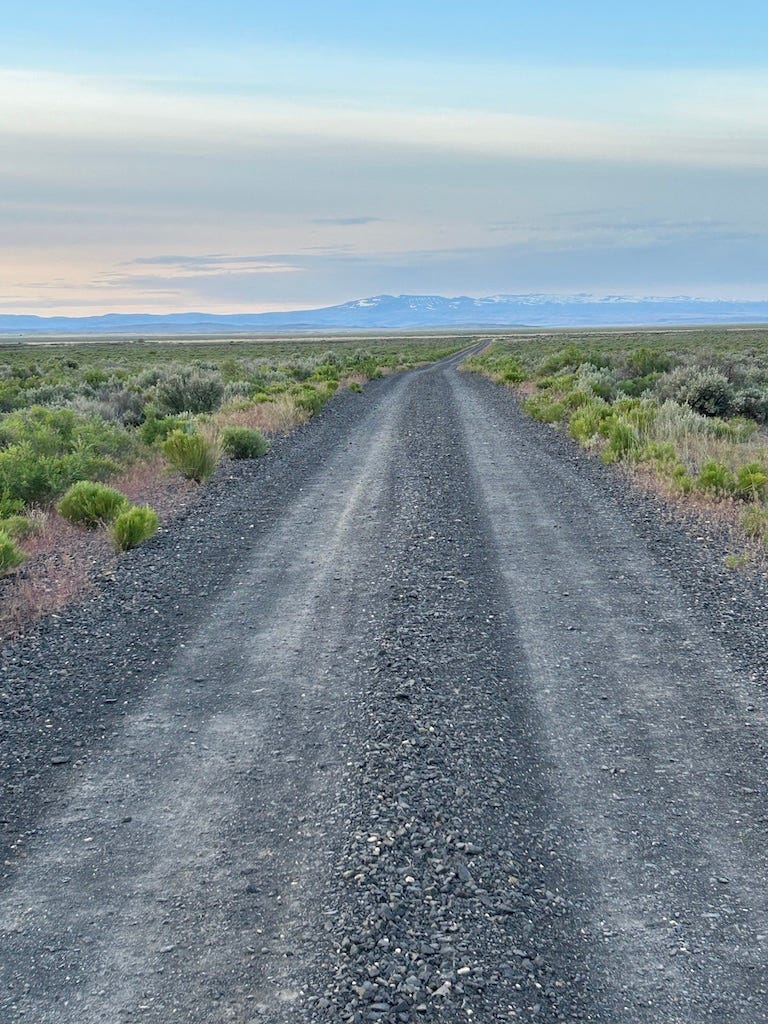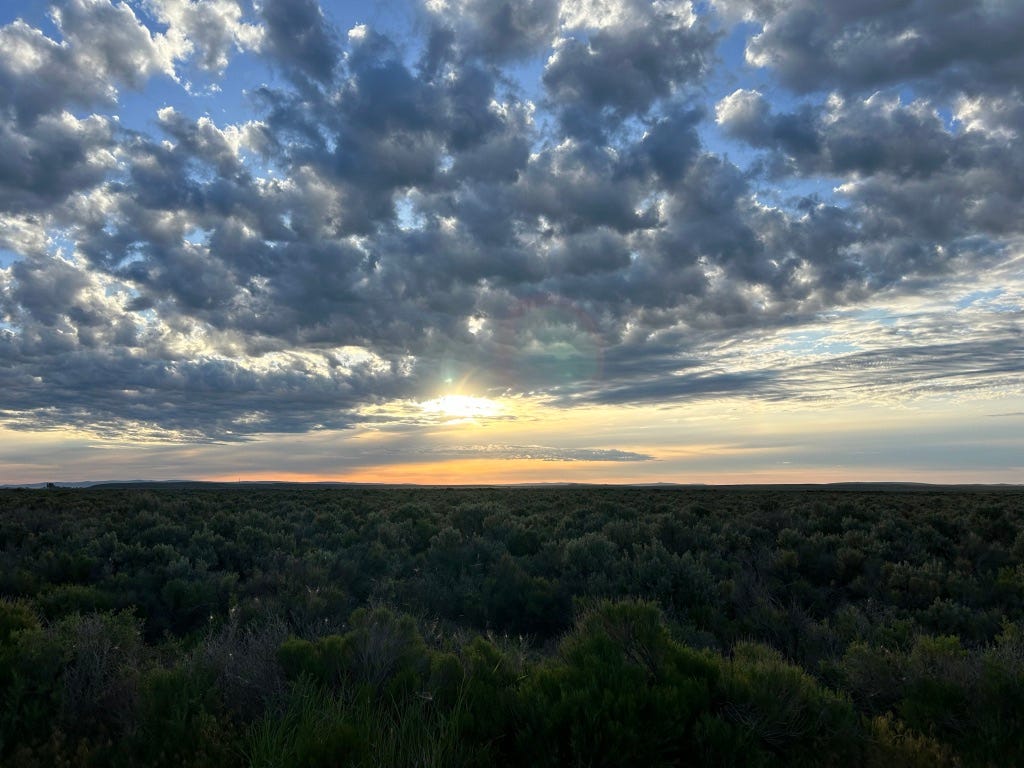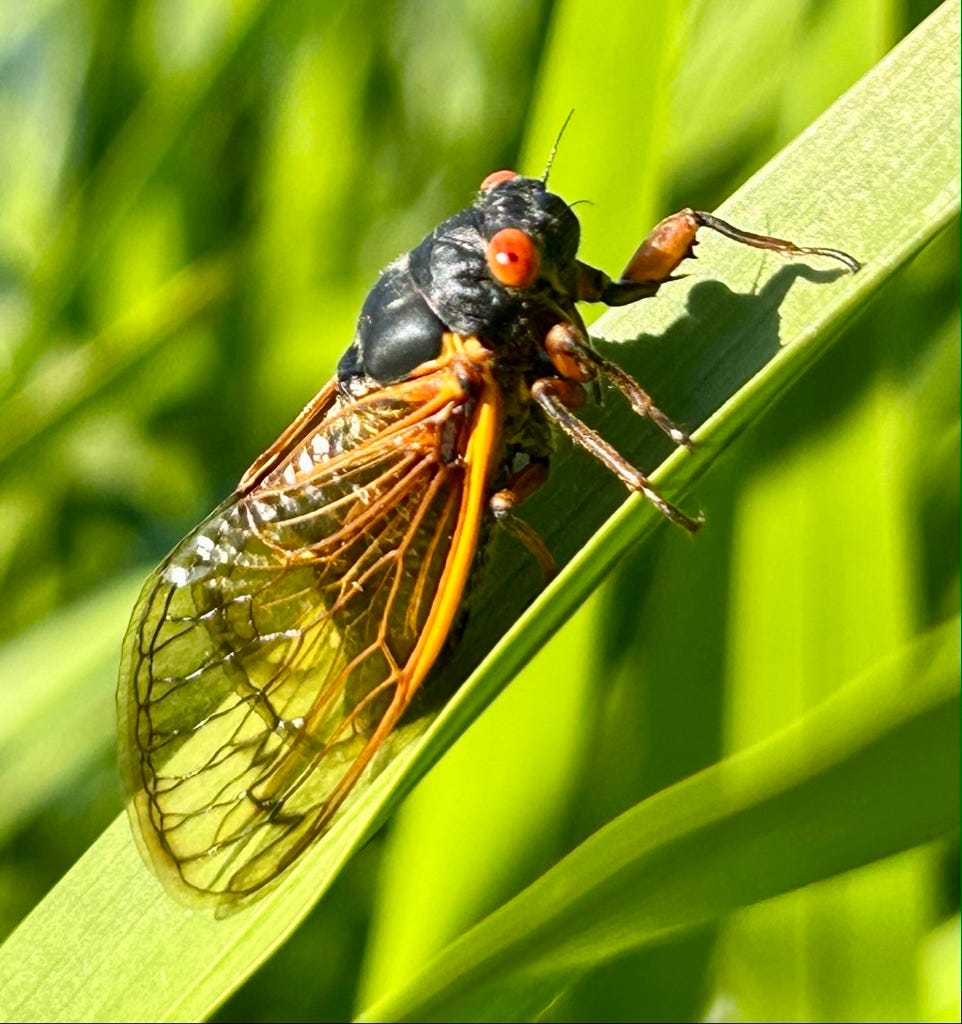I’m sitting with my friends on their porch overlooking a small valley nestled in the jumble of mountains that is western North Carolina. The valley is back-dropped by a steep ridge blanketed with a deciduous forest in full spring leaf. There are 144 species of hardwoods in western North Carolina, each one bearing a host of broad leaves that reflect light shifting in a changeling sky. This requires more nuance on the color green than even my native habitat in the Oregon Coast Range. The overwhelm causes me to flip a sort of neurological breaker switch, and in my mind the complexity of shadow and color is reduced to finely textured darkness. Like the conifer ridges at home, the hardwoods capture morning clouds tendriling upward like ragged silk, remnants of yesterday’s thunderstorm.
We talk and laugh between sips of coffee, catching up on 33 years that have flown by since last I saw them. They are fundamentally good people, folks whose kindness rises from every pore, clinging to them like cloud vapor. They are the friends you are forever grateful for even in their absence, a separation reinforced by busy careers, raising kids, and 2,700 transcontinental miles. She was my best friend in graduate school, the person without whom I may not have survived that tumultuous first year. She exudes a calm that is reinforced by a soothing radio voice and easy laugh. We talk about our parallel experiences, she a biologist and artist, me a biologist and writer. Together we wonder together whether our shared amalgamation of science and art is the unconscious glue that held us together all these years.
I was scheduled to be sitting on this porch four years ago. But life has a component of randomness, and tough things happen even to good people The trip was derailed by unspeakable loss. My friends have persevered and found their way back from the gaping canyon of their grief. Yet they are forever changed. Like that silent ridge across the valley, their loss will always lie in the background. Clouds move around or sometimes obscure it. Autumn will arrive and transform the hardwood slopes to copper and gold. But the landscape of loss never relinquishes its steadfast reality, nor should it. I try to emulate the soft wrap of clouds and hold my friends in the best way I know. And they are holding me. They teach me bird calls and printmaking and woodworking and how we mold our lives around grief.
They are also teaching me to relax my frenetic grip on the world. This morning our laughter rolls off the porch like those torrents of rain from yesterday’s thundershower. I have nothing more pressing than to sit here with them and their two dogs. We listen to the syrupy weep of Cardinals. The chirp and rasp of Eastern Towhees. The frenetic chatter of a Carolina Wren bustling into tree shadow on cinnamon toast wings.
Later we’ll walk the dog in the forest.
***
A few days and long jet ride later, I’m awake at dawn at Malheur Field Station in the arid country of southeastern Oregon. Even though May has nearly crossed into June, nighttime temperatures in this thin arid air have fallen into the thirties. I pull on a jacket, togs, knit cap, gloves, and running shoes. My binoculars are slung across my chest. I coax my feet into a shuffling walk/jog, crunching over the gravel on a two-track road drawn straight as a carpenter’s pencil line across the basin floor. The North Carolina mountains are a universe away; trees need not apply. There is only Big Sagebrush and Rubber Rabbitbrush rising chest-high above the alkali soil.
Sun breaches the low-slung eastern ridge and is immediately muffled by cobblestone clouds. A Loggerhead Shrike leaps from the ghostly bones of a dead willow and dives across the road, white wing patches, black mask, and heavy beak flashing with the certainty of death. A lone Sage Thrasher warbles and churrs from a head-high sagebrush to my left. A Sage Sparrow seems to ask permission to perch low in the thrasher’s bush. Permission granted.
My formative birding trips decades ago took place here. But this morning the memories make me sad. Forty years ago I stayed at this same field station. Walked through these same high desert shrubs at daybreak. I was a neophyte birder intent on learning the calls of Horned Lark and Sage Sparrow, Lark Sparrow and Sage Thrasher, working hard to decipher the rhythm and tone of their various chitters and cheeps. Now the wide-open country seems to have swallowed the few birds who remain.
Likewise, the field station has fallen into decline. In those halcyon years of the late 1970s and early 1980s, any weekend in May saw every dormitory packed with college students from a consortium of institutions around the Pacific Northwest. The consortium has now been dissolved. A few buildings have been nicely renovated to accommodate groups like the one I’m with this weekend. The food in the dining hall is still good. But many of the dorms are empty and announce this new era with peeling paint.
I’m not naïve. Yes, I know about recent songbird declines and even some of their causes. Yes, I’m aware of the terrible state of funding for public institutions and the cost of transportation and insurance. But on this newborn morning, I’m searching—for the joy of birdsong rippling across open country, for joy in a world beleaguered by loss.
While I stand motionless in my grieving, cold air crisping my cheekbones and fingers icy from grasping binoculars, I hear them. The songs of Western Meadowlarks. They burble like springs surfacing from the arid basin floor. Meadowlarks are the poets and artists of the morning, painting the subdued sunrise with stanzas generated from AI: Authentic Intelligence, Artful Intelligence, Attentive Intelligence. To me they are singing We are still here! We are still beautiful!
I listen with all the depth and intention I can muster.
***
A few days after returning from the arid country, I boarded another plane, this time to Chicago to help celebrate my daughter’s graduation from the clinical counseling Master’s program at Northwestern University. It was a momentous day for her because it marked the end of three years of seminars, papers, exams, and self-imposed poverty to become a mental health counselor, a relatively small group of underpaid professionals who are sticking their fingers into the dike that holds back the rising torrent of a national health care crisis.
The periodical cicadas were cheering too, but not for my daughter. They have emerged and graduated into adulthood after 17 years as underground larvae feeding on tree roots. They have burrowed to the surface, cracked out of their larval exoskeleton, and exploded into the sunlit world for one purpose: sex. The adults are the shape and size of the last joint on my thumb, but far more elegant. The head, thorax, and abdomen are black as a glob of tar, punctuated by protruding eyes perched like droplets of blood atop their head. The body is encased in transparent wings that are outlined and veined with safety vest orange.
The only thing more spectacular than their looks is the collective roar produced by individual males. Cicadas have vibratory structures on the abdomen called tymbals. When the abdomen contracts, these rib-like structures buckle and click in quick succession, producing a buzz that is amplified using the abdomen as a sound chamber. They buzz to attract females. They buzz to repel predators. They do not buzz to cause hearing loss in humans, even though this does happen.
The true magnitude of this collective outpouring of cicadas finally caught up with me on a rapidly warming morning following graduation day. I was jogging across the Skokie River Dam in Winetka, the Chicago suburb where we were staying, heading for a public walking trail for some birding. The wind roused itself into a gust that snatched my prized Spotted Salamander hat given to me by friend and fellow writer Marina Richey. Before I could grab it, the hat tumbled across the concrete dam like a crippled pigeon, falling over the edge and into the brown river. The wind drove the hat into the current from an outflow gate. It then moseyed across the river toward a couple of fisherman trying their luck from a concrete revetment.
Backtracking, I found a narrow trail bisecting the heavy riparian vegetation and headed in the direction of the river. Inside this leafy chasm, I came full-on-front-and-center with the buzzing enormity of the periodical cicada hatch. An apocalypse of winged cigar stubs etched in orange hung from leafy branches that leaned into the trail. Every so often a cicada made a short sputtering flight and landed on my bare arm, clutching my vestigial version of mammalian hair and prickling my skin with its six-legged clasp. One male rode along for a bit, issuing an occasional chirp. I’m not sure whether he considered me a predator or a mate. Regardless, I took the liberty of explaining to him that I was a stranger in town and might have found my way into the wrong bar.
As badly as I wanted to retrieve my salamander hat, the collective cacophony of literally millions of cicadas brought me up short. In this topographically featureless place, their buzzing became an audible landscape with nuance and texture. The insects sang in pulsing unison. Close in, the sound was a shrill rising and falling, like shimmering canyon walls that occasionally cracked and relinquished to the voices of chirruping cardinals and robins. Beyond the immediacy of the leaning trees, the Doppler effect caused the pitch to drop, and the sound rolled away into vibrating hills. The roar deepened in the distance, becoming sonic mountains rising to a height above my failing ears. I was awestruck; all of this so that these otherwise long-lived insects could mate, lay their eggs, and die within days. It felt like an insect version of the frenetic thrash and churn of spawning salmon back home.
Moments later I returned to my broader senses and focused on my hat swirling in the Skokie River. Channeling my inner primate tool maker, I broke off a dead willow branch to fish my headgear out of the drink. When I emerged next to the stream, an elderly fisherman stood holding my hat and grinning. He had seen me coming. Today I caught two hats! I thanked him profusely and happily plopped the cool river-soaked cap onto my balding scalp.





I am so overdue on reading your blog until this evening. I was in total suspense about the salamander hat I gave you! And phew...rescued! I'm quite relieved. And yes--a fantastic read as always--this one more travelogue --yet in each anecdote always the merging of nature's beauty, science, and the human spirit too--with that oh-so-you voice I've come to love . Thank you!
wonderful journalesque story that we might all come along on … thank you !